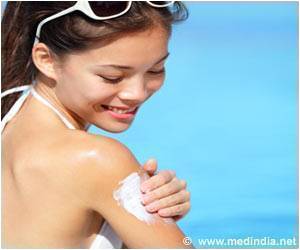Highlights
- Seaweed from the natural environment can protect the human skin effectively from sun’s rays
- Synthetic UV radiation filter formulations can cause damage to natural water systems and marine life
- Mycosporine-like Amino Acid (MAA)/palythine from seaweed can also act as a potent antioxidant and thereby can protect the skin from oxidative stress, linked to cellular damage and photo-aging
Using human skin cells in a lab, researchers showed that even at very low concentrations MAA could effectively absorb harmful rays from the sun and protect the cells against UVR induced damage. They also showed that palythine is a powerful antioxidant that could offer skin protection against oxidative stress, linked to cellular damage and photo-ageing.
The paper, published in the British Journal of Dermatology, represents a breakthrough that could help move towards the development of an eco-compatible, non-toxic, natural sunscreen that protects human skin without negative environmental effects. Further research is required in order to prove that the compound has the same properties outside of the lab environment.
The European Chemicals Agency and The Environmental Effects Assessment Panel (EEAP), part of the United Nations Environment Programme (UNEP), have expressed concern about the eco-toxic effects of eight out of the 16 commonly used sunscreen filters in Europe.
Lead author, Dr Karl Lawrence from St John’s Institute of Dermatology at King’s said: ’MAAs, in addition to their environmental benefits, appear to be multi-functional photo-protective compounds. They work through the direct absorption of UVR photons, much like the synthetic filters. They also act as potent antioxidants, which is an important property as exposure to solar radiation induces high levels of oxidative stress and this is something not seen in synthetic filters.’
Our data show that, with further research and development, marine derived sunscreens may be a possible solution that could have a significant positive impact on the health of our marine habitats and wildlife, whilst still providing the essential sun protection that human skin requires to guard against damage that causes diseases such as skin cancer.’
- K. P. Lawrence, R. Gacesa, P. F. Long, A. R. Young. Molecular photoprotection of human keratinocytes in vitro by the naturally occurring mycosporine-like amino acid (MAA) palythine, British Journal of Dermatology (2017). DOI: 10.1111/bjd.16125
Source-Eurekalert










